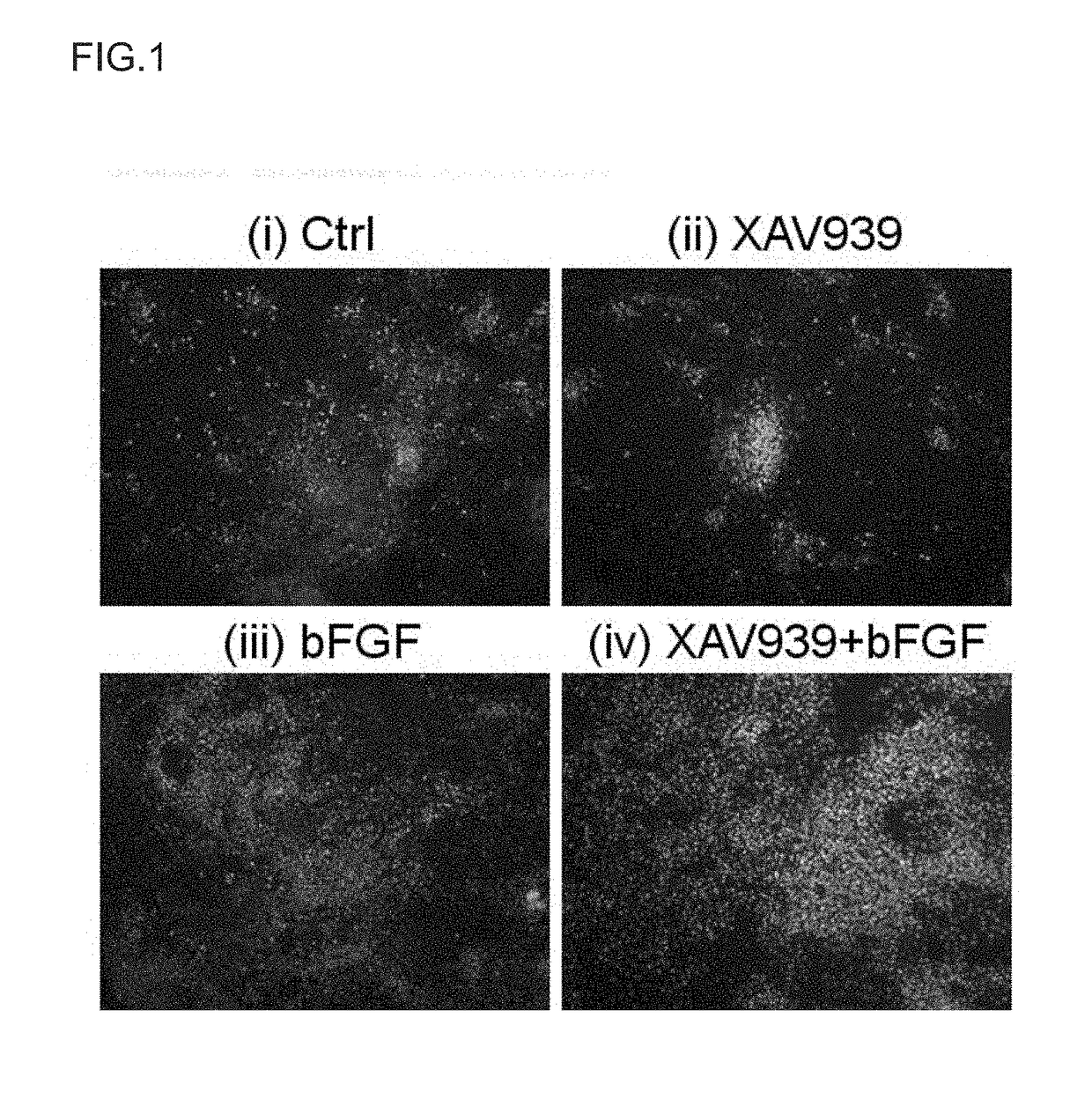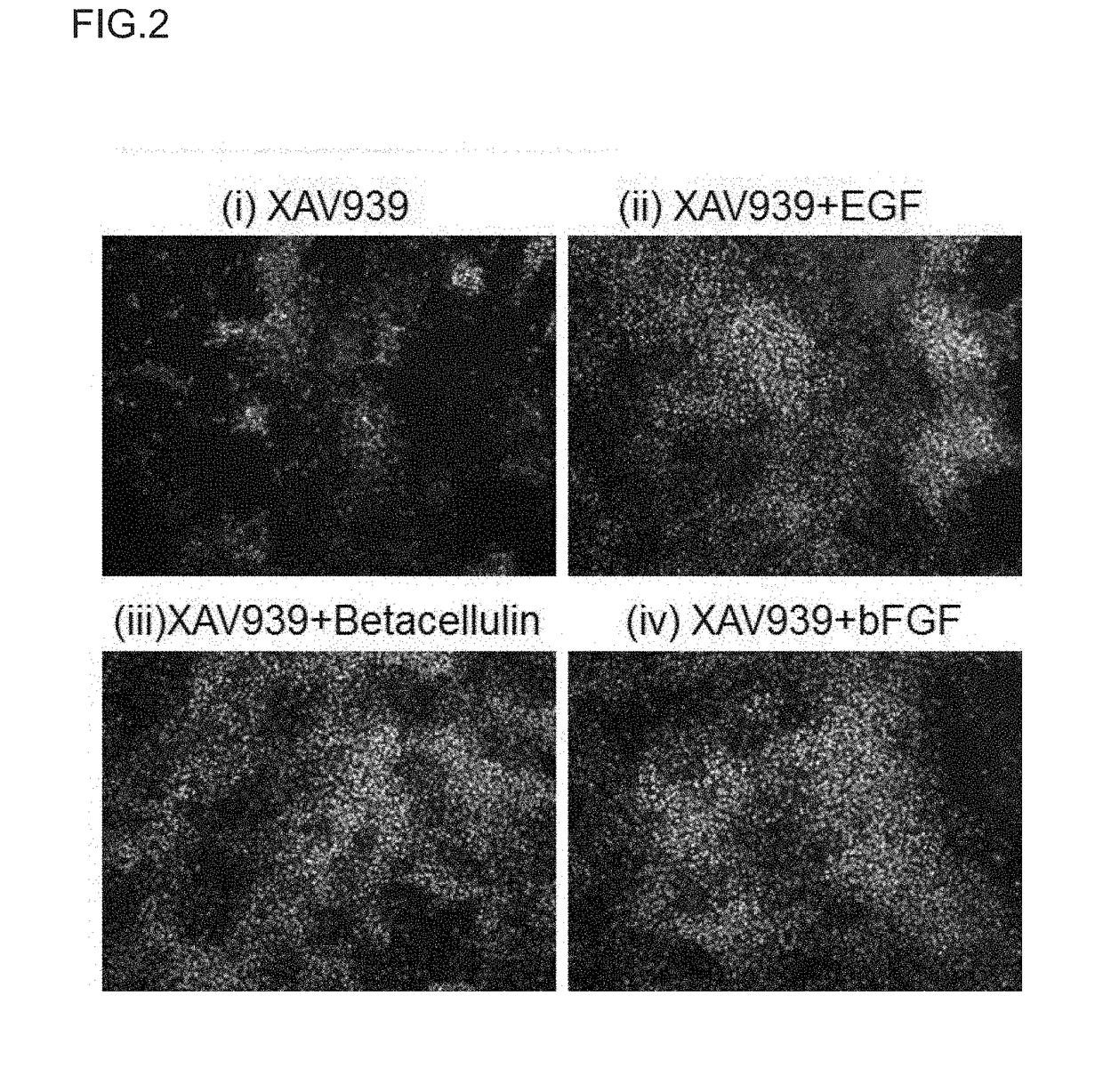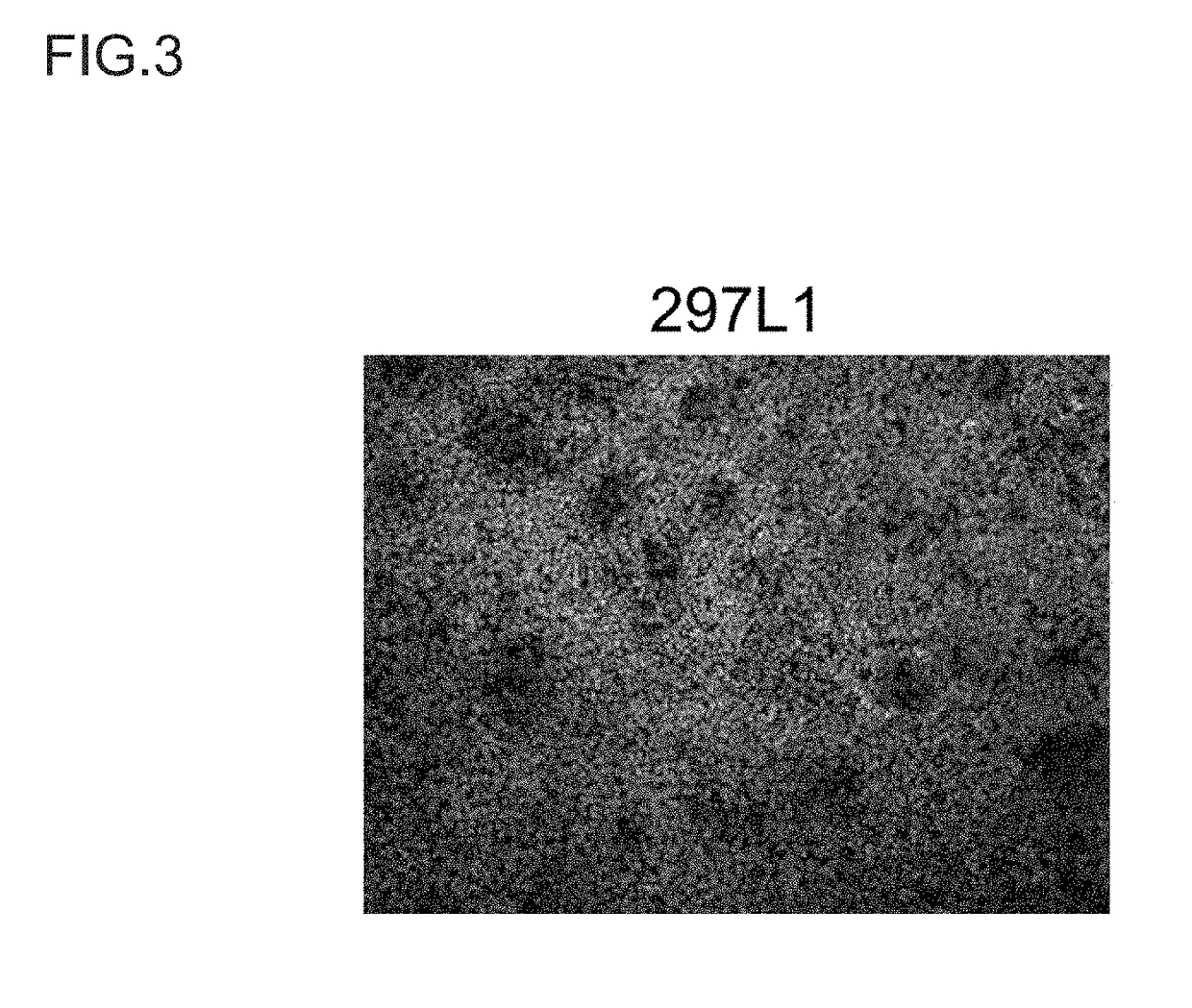Method for Proliferation of Pancreatic Progenitor Cells
a pancreatic progenitor cell and pancreatic endocrine technology, applied in the field of pancreatic endocrine progenitor cell proliferation, can solve the problems of insufficient method, insufficient purity of pancreatic progenitor cells, and difficulty in efficiently proliferating pancreatic progenitor cells, etc., and achieve high purity and efficiency. high
- Summary
- Abstract
- Description
- Claims
- Application Information
AI Technical Summary
Benefits of technology
Problems solved by technology
Method used
Image
Examples
reference example 1
(Reference Example 1) Induction of PDX1-Positive Cells in Human iPS Cell Line 253G1 Cells
[0105]253G1 cells (iPS cell line prepared by the expression of OCT4, SOX2, and KLF4 using retrovirus; Nature Biotechnology 26, 101-106) were used as human iPS cells.
[0106]The human iPS cells were cultured using Essential 8 medium (Life Technologies Corp.) in a 6-cm dish or a 10-cm dish coated with vitronectin (Life Technologies Corp.) (in the present specification, also referred to as a vitronectin-coated dish). For passaging, the human iPS cells were dispersed into the state of small cell masses by treatment with 0.5 mM EDTA / PBS and inoculated to a vitronectin-coated dish. The passage ratio was 1:5 to 1:100 depending on the state of the cells, and Essential 8 medium supplemented with 10 μM Y27632 (Wako Pure Chemical Industries, Ltd.) was used only immediately after a passage. On culture day 2 or later, Essential 8 medium alone was used and replaced with a fresh one every day, and the passaging ...
example 6
(Example 6) Induction of Pancreatic Progenitor Cells Capable of Proliferating Using Other Human iPS Cell Lines
[0129]Study was made on whether or not pancreatic progenitor cells capable of proliferating could also be induced from other human iPS cells. First, new human iPS cells were prepared by the following method: blood collected into a heparin sodium-containing blood collection tube (Terumo Corp.) was diluted 2-fold with PBS, then layered on Ficoll-Paque PREMIUM (GE Healthcare Japan Corp.), and centrifuged at 400 g at 20° C. for 30 minutes to separate peripheral blood mononucleated cells (PBMCs). Ficoll and the diluted blood were used at a ratio of 3:4. The recovered PBMCs were washed by centrifugation using PBS and then resuspended in StemSpan H3000 (STEMCELL Technologies Inc.). Alternatively, the PBMCs were cryopreserved using Cell Banker 3 (Nippon Zenyaku Kogyo Co., Ltd.). Next, the PBMCs were inoculated at a concentration of 3×106 cells / well to a 6-well plate. 10 ng / ml IL-3 (...
reference example 3
(Reference Example 3) Differentiation Induction of Insulin-Producing Cells from Proliferated Pancreatic Progenitor Cells
[0132]Study was made on whether the proliferated and repetitively passaged pancreatic progenitor cells would have the ability to differentiate into INSULIN-producing cells. The cells used were 297L1 cell-derived pancreatic progenitor cells (passage number: 7). The pancreatic progenitor cells brought to a single cell state using Accutase were inoculated at 6×104 cells / well to a 96-well plate coated with Matrigel. The culture solution used was IMEM-option Zn++ medium (containing 1% B-27®) supplemented with XAV939 (1 μM), Y27632 (10 μM), and bFGF (50 ng / ml). The cells were cultured for 2 days to render the cell density confluent. Then, the cells were washed with IMEM-option Zn++ medium and then cultured for 9 days using IMEM-option Zn++ medium (containing 1% B-27®) supplemented with ALKS inhibitor II. The ALKS inhibitor II is known to induce INSULIN-positive cells (St...
PUM
| Property | Measurement | Unit |
|---|---|---|
| temperature | aaaaa | aaaaa |
| temperature | aaaaa | aaaaa |
| concentration | aaaaa | aaaaa |
Abstract
Description
Claims
Application Information
 Login to View More
Login to View More - R&D
- Intellectual Property
- Life Sciences
- Materials
- Tech Scout
- Unparalleled Data Quality
- Higher Quality Content
- 60% Fewer Hallucinations
Browse by: Latest US Patents, China's latest patents, Technical Efficacy Thesaurus, Application Domain, Technology Topic, Popular Technical Reports.
© 2025 PatSnap. All rights reserved.Legal|Privacy policy|Modern Slavery Act Transparency Statement|Sitemap|About US| Contact US: help@patsnap.com



